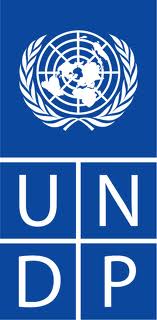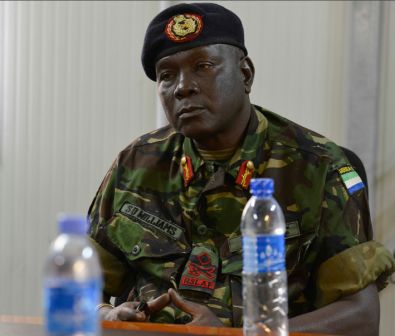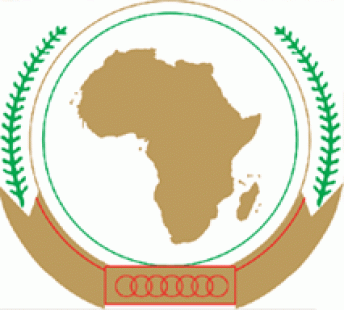New UNDP Report Says Investing in Youth Key to Somalia’s Future
NEW YORK, 28 September 2012—The future of Somalia and the well-being of its people rests significantly on empowering its large youth population, said the United Nations Development Programme (UNDP) today at an event in New York launching the agency’s highly-anticipated Somalia Human Development Report 2012: Empowering youth for peace and development. This is the first report of its kind on this war-torn Horn of Africa country in more than a decade.
“As witnessed in the Arab region and elsewhere, young people can serve as potent drivers of political, social and economic transformation,” said keynote speaker Sima Bahous, UNDP’s Regional Director of the Regional Bureau for the Arab States. “We can no longer afford to overlook the potential gains from placing youth at the center of Somalia’s development,” she said, adding that over 70 percent of Somalia’s population is under the age of thirty.
The launch follows the Somalia mini-Summit which took place this week during the UN General Assembly, where the country’s newly elected president, Hassan Sheikh Mohamud, joined the United Nations Secretary-General and key Somali policymakers via video conference from Mogadishu to discuss a vision for Somalia’s future that focuses on peace-building and economic recovery.
The new report – which is based on surveys conducted in more than 3,000 households in south central Somalia, Puntland and Somaliland – reveals that although the majority of Somali youth believe they have a right to be educated (82%) and a right to decent work (71%), they feel disempowered by multiple structural barriers built into the family, institutions, local government and society at–large. This lack of viable education and employment opportunities – in addition to clan and cultural prejudices – has created a high level of frustration and discontentment among young people. Therefore, radical shifts in policies and attitudes are needed in order to empower and place them at the core of the development agenda.
“What young Somalis really want is a different future for themselves, one in which they can make a decent living in peace, and weigh in on the decisions that affect their lives,” said Mark Bowden, UNDP’s Resident Representative in Somalia, adding that two thirds of Somalia’s youth are unemployed – one of the highest rates of joblessness in the world. “The danger is that when institutions and labour markets fail to respond to the needs of young people, marginalized youth can gravitate towards violence as a means to an end.”
The report contains a Youth Charter, developed by youth representatives from Somaliland, Puntland and south central Somalia, with inputs from a wider group within Somalia and in the diaspora. The charter underlines the aspirations, perceptions and needs of young Somalis – such as free and compulsory basic education and greater representation of youth in parliament – while serving as a guiding set of principles that the government, development agencies and civil society should abide by in order to engage youth and ensure the inclusion of their needs in the design of development policies.
As part of the solution, the report recommends putting the empowerment of excluded groups – such as youth and women – at the centre of Somalia’s national development agenda, and calls for a broadening of the current clan-based electoral system to include marginalized groups. Job creation and improved educational opportunities for all social groups, including those that have already missed out on such opportunities, will also help pave the way towards a more stable nation. There is also a need for a platform for young Somalis to express themselves freely at all levels, while strengthening the capacity of local authorities to support youth programmes.
To ensure young people remain at the center of national and local plans for peace and development, UNDP is working with the new government, civil society and international partners, building on past initiatives – such as providing vocational training to youth at risk, equipping young Somalis with scholarships and employment opportunities, training young Somali women and men as police recruits – to help create a better future for Somali youth.
“Harnessing the full potential of Somalia’s youth is the key to new dynamism and hope,” said Ms. Bahous. “Opportunities could come through providing quality education and decent jobs—channeling the demographic dividend into economic gains and social transformation.”
A powerful new vision for Somalia is now needed, one oriented around building an inclusive society, where young people feel empowered, and have the capabilities and opportunities to improve their lives and bring about lasting peace and stability to this Horn of Africa nation.
Key data:
- Somali development and humanitarian indicators are among the lowest in the world;
- Over 70% of Somalia’s population is under the age of thirty;
- The youth population in Somalia may continue to swell due to high fertility rates, estimated at 6.2 births per women between 2010 and 2015;
- Overall unemployment among people aged 15 to 64 is estimated at 54% in Somalia, up from 47% in 2002;
- The unemployment rate for youth aged 14 to 29 is 67% —one of the highest rates in the world; women lose out more, with unemployment rates at 74%, compared to men at 61%;
- Life expectancy in Somalia is 50 years, up from 47 in 2001;
- Over 60% of youth have intentions to leave the country for better livelihood opportunities;
- Somalia ranks as one of the worst countries worldwide for women. Gender-based violence and discrimination against Somali women is widespread.
Stay with Sierra Express Media, for your trusted place in news!
© 2012, https:. All rights reserved.






